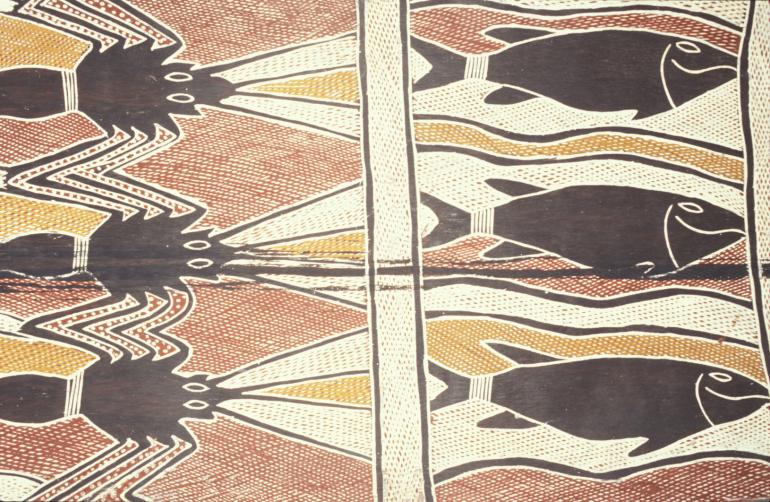Treatments
Documentation
Carefully document the history and condition of any artwork as soon as it enters a collection. Record details concerning the painting and the frame, including:
- notes about the artist, the date of the painting, dimensions (framed and unframed) and the title of the work;
- photographs including overall shots of both sides and any detailed images taken from various angles to highlight special features such as labels, damage or other interesting features; and
- a condition report recording the dimensions, materials used in the painting and supports, details of any previous restorations or irregularities, descriptions of the type and condition of all materials present (even if unsure of their nature) and labels or writing on the edges or back.
Evidence of an underlying work may require specialist examination using infra-red, UV or X-ray photography.
Cleaning and Repairing
Conservation treatment of paintings is a specialised area of work, requiring high levels of skill and training. As inappropriate treatments have the potential to damage and compromise the integrity and value of a painting, any decision to treat a painting must be made only after consulting conservation and curatorial professionals.
Each painting is unique and no general guidelines can be set as to the extent of treatment required. Bearing the above cautionary notes in mind very brief details are given below of the type of work that would require the services of a conservator. These include:
- removing dirt and stains from the surface;
- removing yellowed varnish using solvents to reveal the original colours of a painting;
- consolidating friable and powdery pigments or grounds;
- reattaching loose or flaking paint or relaxing blind cleavage of paints;
- repairing tears or holes;
- lining or re-lining a weakened canvas or strip lining to support a weak tacking edge;
- re-stretching a canvas. Great care is needed to prevent splitting as aged canvas loses its flexibility; and
- re-integration. This involves filling and in-painting the losses of paint so that visual continuity is achieved.
It is important that all conservation work is reversible as conservation materials will also deteriorate over time. Thus, when a recently applied varnish eventually ages and deteriorates, it will be able to be removed. Similarly, materials used in retouching may age at a different rate to the original and may have to be removed at some time in the future.
An example of a painting that required treatment is described below (Figure 6). While not an example of the treatment of an easel painting, the decision making process when planning a conservation treatment remains the same. The painting, a modern Aboriginal bark painting in an acrylic medium, was in the process of being given a collection number when ink was accidentally splashed onto it.
Figure 6: Acrylic painting showing damage from careless handling of ink.
The proposed treatment of this work of art was to:
- assess the damage to the painting and prepare a condition report;
- photograph the painting, including close-ups of damaged areas;
- sketch stained areas to highlight those damaged areas which may not show up sufficiently in a photograph;
- determine the chemical nature of the ink;
- search the literature for all known solvents or reagents which will dissolve the ink;
- conduct spot testing to determine if the chosen reagent will remove the ink without damaging the underlying image; and
- remove the ink area by area.
Should ink removal techniques be likely to affect the underlying paint layers, an alternative to removing the ink may be to over-paint.
All conservation treatments must be fully documented and reversible.













